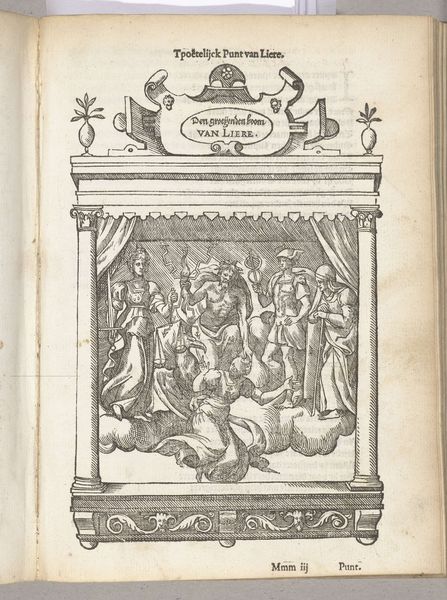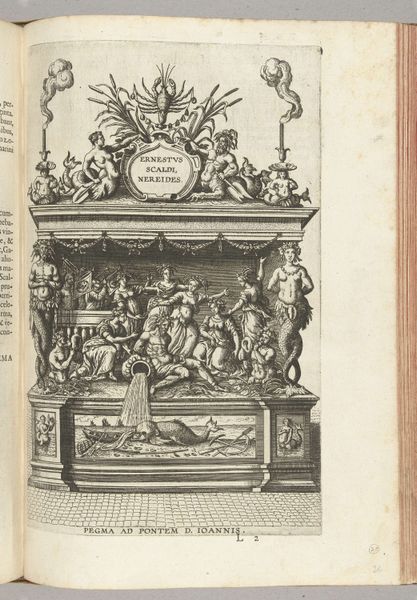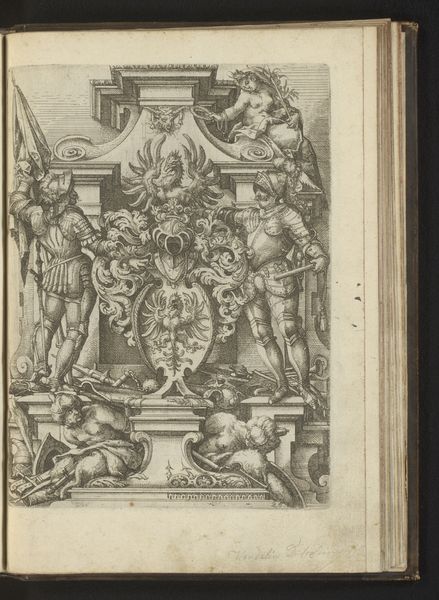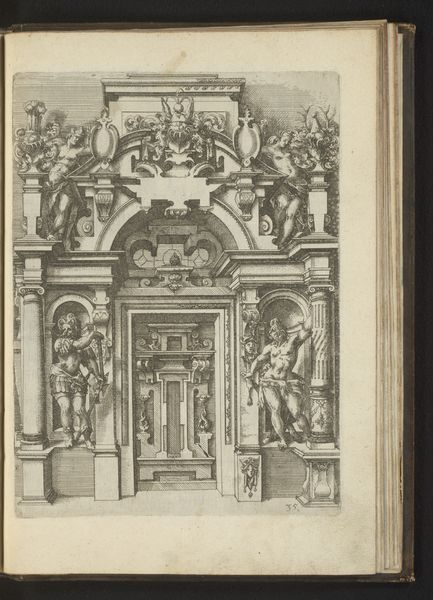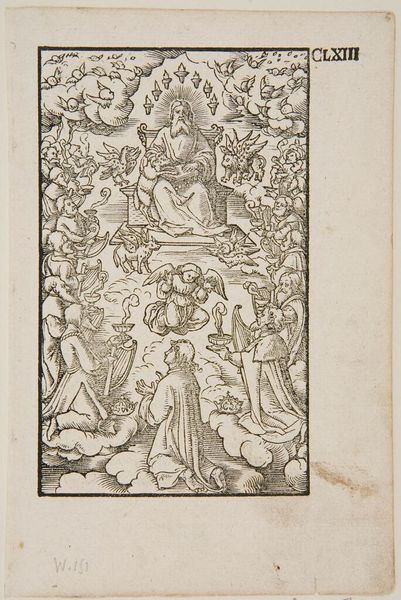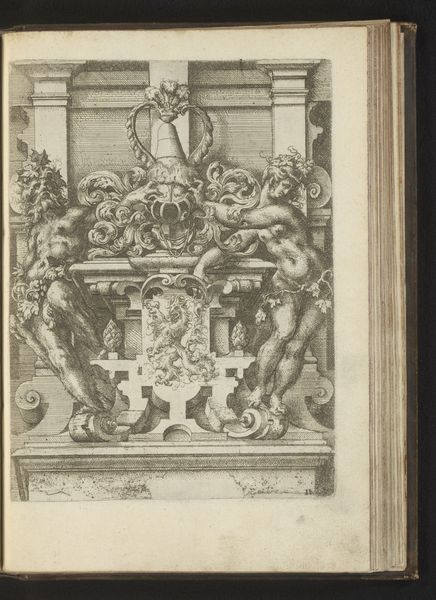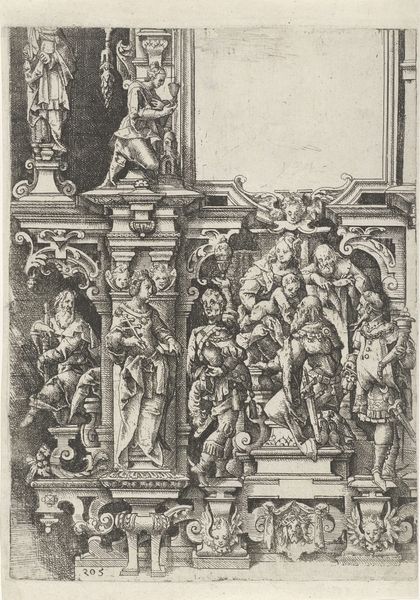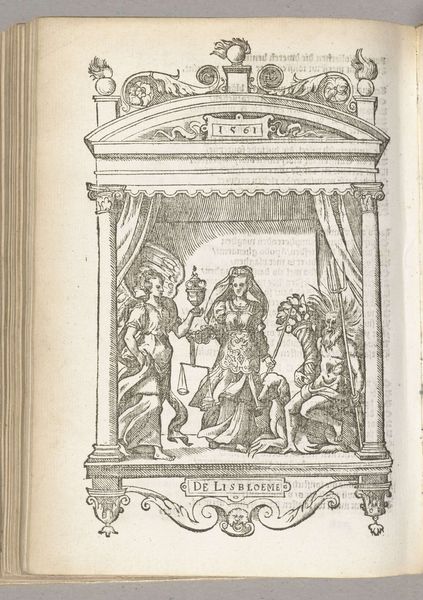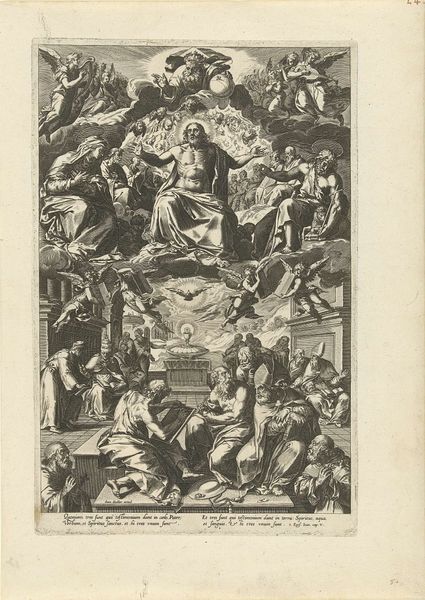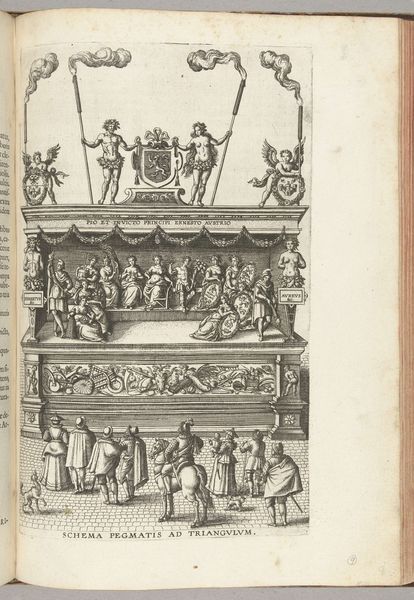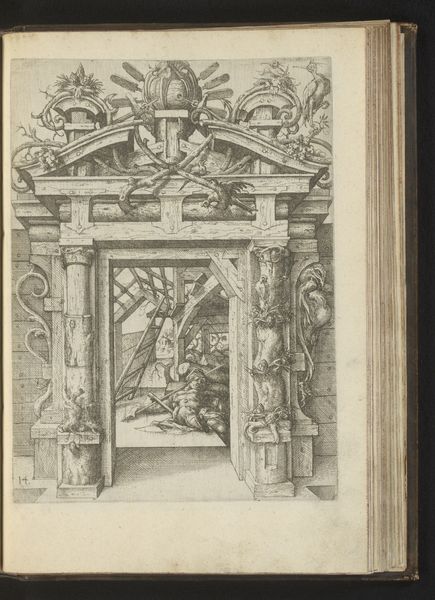
print, engraving
#
aged paper
#
toned paper
# print
#
pen sketch
#
sketch book
#
landscape
#
figuration
#
11_renaissance
#
personal sketchbook
#
ink drawing experimentation
#
geometric
#
pen-ink sketch
#
line
#
pen work
#
sketchbook drawing
#
history-painting
#
northern-renaissance
#
sketchbook art
#
engraving
Dimensions: height 217 mm, width 153 mm
Copyright: Rijks Museum: Open Domain
Curator: This is a print entitled "Blazoen van De Peoene (Mechelen)," created circa 1561-1562 by an anonymous artist. It appears to be an engraving, perhaps from a sketchbook. Editor: It feels allegorical. I'm drawn to the somewhat naive and chaotic energy, almost like folk art but refined through Renaissance sensibilities. The balance of figures is compelling. What are your first impressions? Curator: There's a fascinating duality. The upper register features symmetrical figures flanking a stylised tree with birds— a controlled space of civic virtue. Below, Orpheus charms the wild animals. This resonates deeply with the renaissance concept of civic virtue—cultivating order within ourselves and projecting it onto the world. Editor: I see that push and pull, the imposition of order on something inherently untamed. Orpheus isn’t just making music; he's imposing a structure, a European structure if we consider the lyre's connotations, on this menagerie of beings. It's tempting to view that top register not just as stability but as a form of control. What's that crest signify, the 'Peoene'? Curator: "Peoene" most likely refers to the Chamber of Rhetoric "De Peoene" in Mechelen, and this print may have been made for a theatrical context or pageant that occurred there. I like that your interpretation touches on this imposed order; there were several print series that played with order vs disorder in the Northern Renaissance. The geometric shapes create the symmetry and order you mention in that upper register; they function almost like classical columns supporting the imagery. Editor: Given its probable ceremonial function, it suggests civic performances in Renaissance culture were ways to legitimize power structures through allegory and spectacle. The artist, whoever they may be, is then a cog in this machine. This brings forth complex implications about artistic intention and agency in a politically charged era. Is it possible they included the animal "disorder" as a form of subtle resistance? Curator: That's a fantastic angle. The inclusion of animals in that second scene *could* also be an acknowledgement of chaos, an understanding that a purely ordered existence is impossible or undesirable. I agree it complicates any singular reading, the interplay is what makes it compelling. Editor: Absolutely. Art rarely offers one easy takeaway, especially when the forces of symbolism and lived reality become entwined like this. Ultimately, I'm intrigued by how a piece from so long ago can still ignite so many pertinent contemporary questions.
Comments
No comments
Be the first to comment and join the conversation on the ultimate creative platform.
